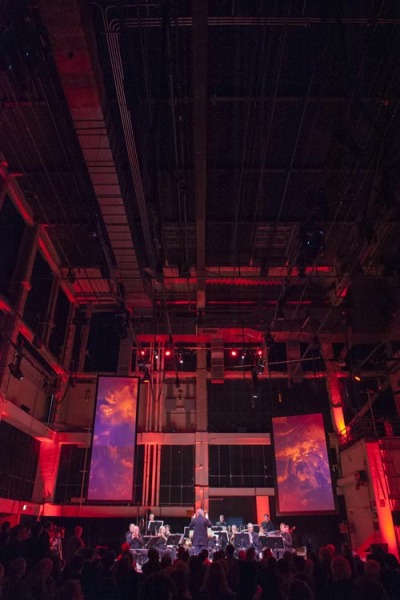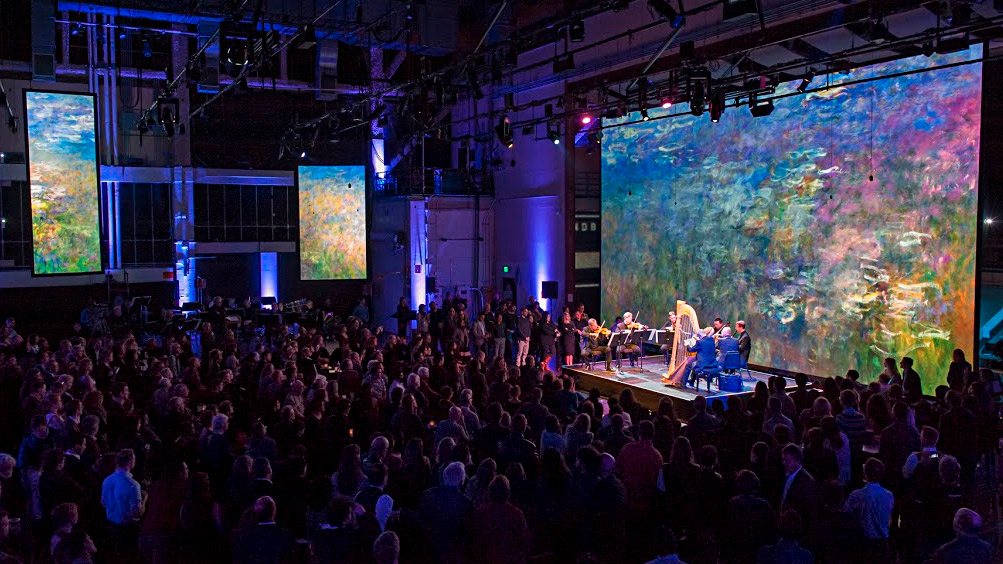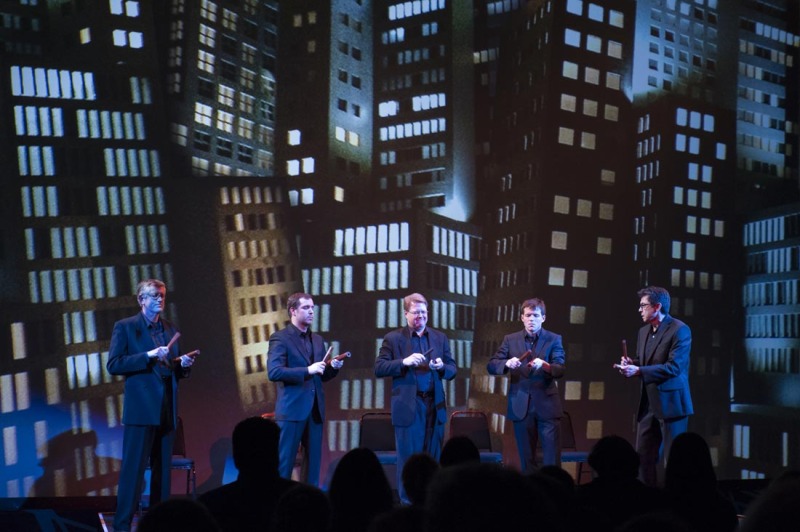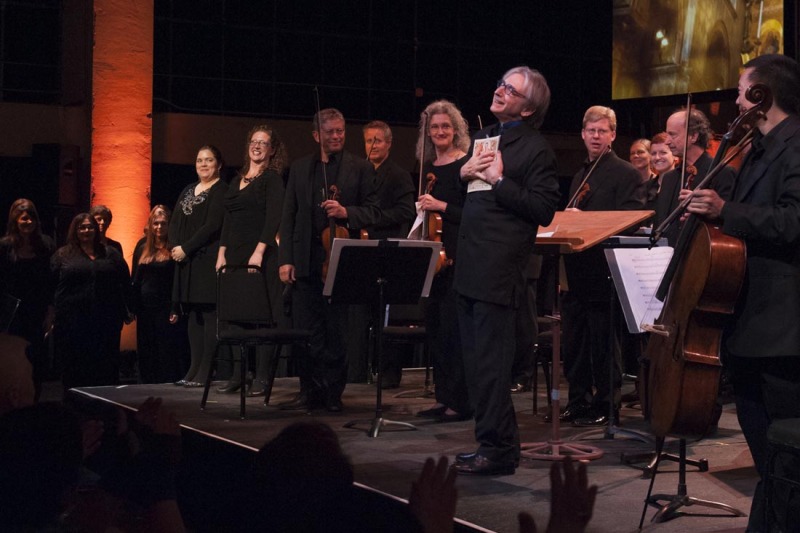What in the world is SoundBox?
That very question was on the minds of the fans who lined up Saturday night, along Franklin Street, for a first glimpse of San Francisco Symphony’s new performance space and music series. “Excuse me,” I overheard a woman a few feet behind me ask, “do you know what this is that we have tickets for?”
“Not really,” replied a man’s voice, “but it’s supposed to be really cool.”
With virtually no advertising aside from street graffiti stencils, social media and word of mouth, SoundBox certainly arrived with an air of mystery. Was it a club? A chamber concert? Whatever it was, the majority prediction had already framed it as the Symphony’s attempt to attract younger people to classical music, a goal toward which the world has seen plenty of awkward or even downright embarrassing attempts, by other outfits: symphonic renditions of Grand Theft Auto, incessant string-quartet tributes, and even a Sir Mix-a-Lot twerkfest with symphony orchestra.
And yet amidst these predecessors, SoundBox succeeds on every level, both demographically and artistically. The brainchild of Symphony music director and conductor Michael Tilson Thomas, it’s simultaneously a concert series, warehouse party, experimental workshop, nightclub and sound immersion. It takes classical music from all eras and presents it squarely in the modern day, with cocktails, freedom to wander about and phone and tablet use encouraged. It’s the most comfortable way for many to experience classical music. It’s also the perfect date night. And yes, it’s the coolest thing on the block.

On Saturday night, after entering, patrons who’d paid $25 per ticket crossed a catwalk over a desert landscape while ambient thwonks and whooshes filled the entryway. The cacti, bushes and shells below, wired for sound, shook and rattled at the hands of three musicians performing John Cage’s Branches. These sounds also resonated throughout the 7,600 sq.-ft. main room, which contained a bar at one end, a stage on two sides, seating at low tables in the center, high tables around the perimeter, three large projection screens and atmospheric blue lighting cascading upward along exposed concrete and steel beams, all of which rose to an incredible 50 ft.-high ceiling.




